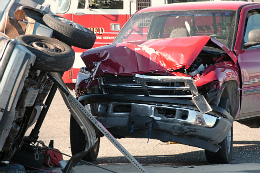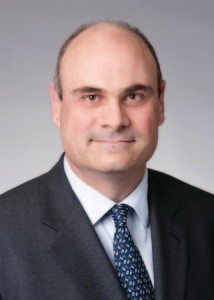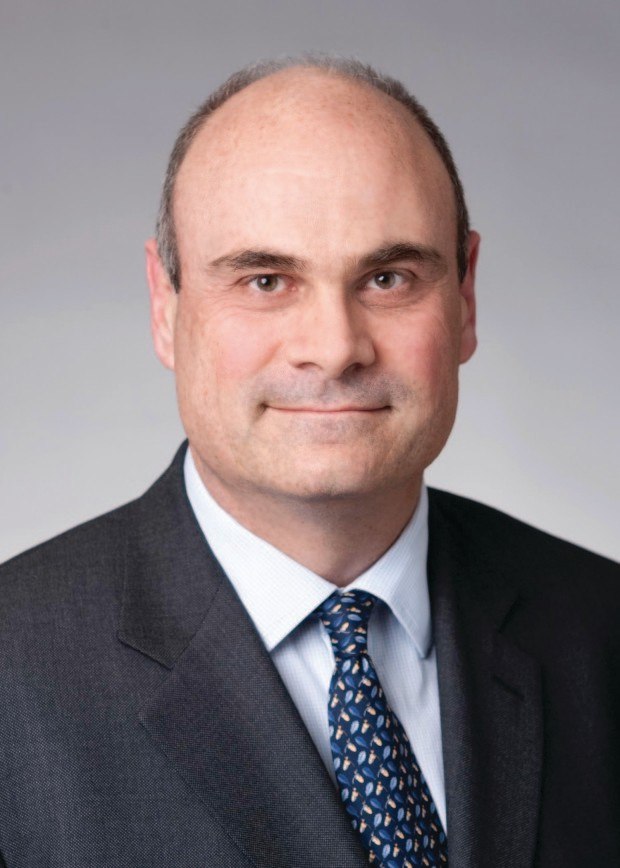While the world is far safer these days—in part thanks to property/casualty insurers—carriers can continue the trend by creatively collaborating with clients and outside experts, American International Group’s CEO said at a conference.
Delivering the keynote address at Advisen’s Casualty Insights Conference in New York earlier this year, Peter Hancock took particular pains to highlight AIG’s efforts to improve road safety, characterizing traffic accidents as “a major public health issue.”
“Today, according to the World Health Organization, road safety is the No. 8 leading cause of death. In just five years, it will jump to No. 5, ahead of throat and lung cancer, diabetes and HIV/AIDs,” he said, going on to describe the carrier’s participation of a global coalition for driver safety called Together For Safer Roads.
Why else has AIG prioritized the road safety issue?
In short, because it’s a battle that can be won, Hancock believes.
“There are some really bad trends—certain forms cancer—that will take a long time to fix. This is something we can actually do something about if we bring coordinated action” to the problem, he said.
Hancock actually made the last observation after his prepared remarks, as he answered a question posed by audience member about how AIG came to be part of the Together For Safer Roads initiative.
In November 2014, AIG working with the United Nations, “joined 10 of our most committed clients including AT&T, AB InBev, Wal-Mart, IBM, Texaco, Facebook” to form the coalition, which Hancock said is the first of its kind.
“After a series of conversations between CEOs, we realized we had a common interest to do something about this….As we looked [to set] priorities as to where large companies can put their thinking and their focus … to make a real difference to the societies we operate in, this [stood out] to be such an obvious one, and very quickly coalesced.”
“Using the U.N. as a body to sponsor this has really recognized that this is not any one company, any one industry or any one country dealing with the issue,” Hancock added. “It’s absolutely pervasive as the number of cars on the road has exploded in many countries that did not have a history of driving,” he said.
“In China alone, the average experience of drivers is three years. So it’s effectively a whole country of teenaged drivers,” he said.

1) safer roads, vehicles and systems; 2) safer road users; and 3) advocacy and thought leadership.
Future coalition efforts will include: benchmarking best practices that advance traffic safety culture among companies and partners; convening stakeholders in key cities to focus on strategies for reducing fatalities; identifying ways technology and data can support road safety; advocating for more funding and support for country road safety initiatives; and raising overall awareness about the road safety issue.
A media statement about the coalition, which notes that road traffic crashes are the leading cause of death around the world for 15-29 year olds, explains that a primary goal of the coalition is “to foster cross-sector collaboration that helps identify and scale best practices on road safety.”
“Members will work with a variety of stakeholders—employees, business, government and community partners—to implement activities that have a proven impact on improving road safety, the statement says, noting that coalition members employ more than 3 million people in over 200 countries, and have vehicle fleets logging more than 3 billion miles every year.
“We’re also exploring ways to collaborate with the Bloomberg Foundation on Road Safety” Hancock reported at the Advisen conference. (Information on Bloomberg Philanthropies Global Road Safety program is available here.)
“We have even teamed up with New York University to see if big data can be used to decrease the amount of time an intersection is declared unsafe from eight-to-10 years to eight-to-10 months by using machine learning to analyze video of near misses,” Hancock revealed.
“Partnership is vital with customers and with experts from academia and other fields,” he said.
While Hancock made a handful of other references to data and analytics during his keynote address, more often, he delivered reminders to underwriters and brokers in the audience to focus on the people behind the numbers. (The audience also included risk managers.)
“Winners will be those who don’t think of drivers as claimants but as people,” he said during his remarks about road safety.
Insuring People

Hancock began his address noting that while casualty insurance is a complex business, “we must remember that casualty insures people. They may look like assets on a balance sheet. But when a driver is injured on the job or a worker goes to the hospital, it’s Mike, John or Susan. They’re not just our longtime employees. They are also our brothers, sisters and daughters.”
“That’s too easy to forget,” he said.
“The way that a casualty adjuster responds to their needs is really important. It’s a moment of truth. It’s where our industry makes or breaks its reputation,” he said.
“It’s also important to understand how our industry changes behavior, and how that change makes the world a safer place,” he added.
Insurers incentivize safety when they set premiums prices and when they pay claims, Hancock said. “Every day when an insurance carrier prices risks, we send a signal into the market about how safe that activity is given its context and information the client provides us.
“When and how a claim is settled sends a similar message. In some ways, it’s a judgment about how safe an activity was to begin with.”
“We are meeting a fundamental human need,” he said, citing the work of psychologist Abraham Maslow, which puts safety second on a hierarchy of human needs behind basic physiological necessities such as food, water and shelter.
Insurance industry products and services are the foundation of meeting the basic need of safety, Hancock suggested. “Think of a world without an early return-to-work program for injured workers.
“What about the Mom-and-Pop candy factory that suddenly experiences a product recall and is now facing bankruptcy,” he asked. “Without economic safety, grief can overcome us,” he said.
Adding brokers into the equation, he cited the risk consulting advice and services they deliver to promote loss prevention efforts.
Worker Safety in ‘A Peaceable Era’
Early in his remarks, Hancock referenced the work of Harvard psychology professor Steven Pinker to tee up one of the recurring themes of his address—that the world is safer today and that insurers are a big part of the progress.
Pinker, in his 2011 book, “Better Angels of Our Nature,” wrote: “Today we may be living in the most peaceable era in our [species’] existence,” said Hancock, quoting from the book and noting that this message “is contrary to [that of] some alarmists.”
Pinker cited “everything from a declining homicide rate in England from 1200 to 2000 to a reduction in state-based armed conflicts from 1936 to 2009,” Hancock said. “It’s an impressive tour de force we can’t ignore, and we are part of it,” the AIG leader said.
Hancock added his own evidence—improving statistics on worker injuries from the National Council on Compensation Insurance.
The rate of fatal injuries plunged by 36 percent over the last two decades and by 90 percent over the last century, he said. “As pointed out in an excellent recent letter by Bob Hartwig at Insurance Information Institute, this happened to coincide with the dawn of the modern workers compensation system,” Hancock said.
“You should be proud of that,” he told underwriters, brokers and risk managers in attendance. “We are winning this battle,” he said, also reviewing advancements in medical care and positive shifts in the health care system in the United States outside of the workers compensation insurance system.
“3D bio-printers are finding their way into the operating room and printing human blood vessels,” he said, giving an example of the former. “In January, the U.S. Health and Human Services Secretary said 50 percent of traditional Medicare payments will be based on quality of care by 2018.”
“We as an industry, and as private health care consumers, should encourage this progress. People in this room have a great responsibility,” Hancock said.
AIG, he said, is doing its part by partnering with experts like doctors at John Hopkins University Bloomberg School of Public Health. Research developed from the Hopkin partnership—now in its fourth year—”inspired us to create a new claims program [based on] advanced-injury analytics to identify the most severe claims and route them to the most experienced adjusters,” he revealed.
In addition, Hancock has amped up the “caliber and range of minds” being brought to bear on AIG’s workers comp claims process. “We have clinical experts in fields as diverse as oncology, health care economics, computer science, medical errors, clinical psychology, substance abuse and trauma outcomes. All give their opinions on at least a quarterly basis to AIG’s claims professionals. They tell us the most critical and costly injuries, and at each stage of the claim,” he said.
“For the sake of all our clients and employees and their families, we can’t afford to stop innovating,” he concluded.
“The key to maintaining this trajectory towards a safer world is thinking creatively, and working together to solve our client’s problems.”





















 Northern California Flooding This Weekend Caused by Heavy Rain, High Tides
Northern California Flooding This Weekend Caused by Heavy Rain, High Tides  Good Times for U.S. P/C Insurers May Not Last; Auto Challenges Ahead
Good Times for U.S. P/C Insurers May Not Last; Auto Challenges Ahead  NOAA Announces Latest AI-Driven Global Weather Models
NOAA Announces Latest AI-Driven Global Weather Models  Insurance Costs, Climate Concerns Factor Heavily in U.S. Home Buying Decisions
Insurance Costs, Climate Concerns Factor Heavily in U.S. Home Buying Decisions 





